The “Instagram Password Hacker” scam tricks people into thinking they can hack into Instagram accounts by entering the usernames of their targets. However, instead of providing any real hacking service, it sends users to malicious websites, often phishing pages. These sites are designed to steal personal information like names, addresses, email addresses, phone numbers, and financial details.
This stolen data is usually sold to third parties or used for other scams. People who fall for this scam face serious privacy breaches, financial losses, and the risk of identity theft. The scam also spreads through mistyped URLs, intrusive ads, or rogue applications, which can further compromise the security of the user’s system by potentially introducing malware like trojans and ransomware.
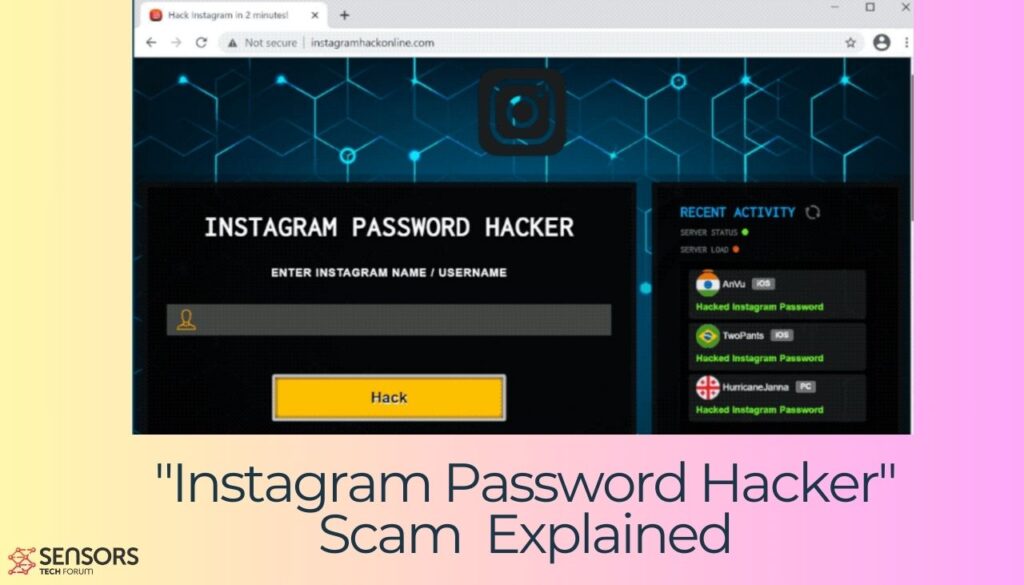
Threat Summary
| Name | "Instagram Password Hacker" Scam |
| Type | Instagram Scam / Hacked Instagram Account |
| Removal Time | Approximately 15 minutes to scan the whole system and remove any discovered threats |
| Detection Tool |
See If Your System Has Been Affected by malware
Download
Malware Removal Tool
|
What Is the “Instagram Password Hacker” Scam?
In essence, the “Instagram Password Hacker” scam is a fake website that creates redirects to phishing pages. The scam targets people looking to hack into Instagram accounts.
Instead of offering real hacking services, the “Instagram Password Hacker” scam redirects users to malicious phishing websites designed to steal personal information such as names, addresses, emails, phone numbers, and financial details. This stolen data is often sold to third parties or used for other scams, leading to serious privacy breaches, financial losses, and identity theft for victims.
What Are the Signs & Consequences of Falling Victim to “Instagram Password Hacker” Scam?
Interacting with an “Instagram Password Hacker” scam can have several serious consequences. Here are some of the potential risks and negative outcomes:
Account Compromise
By providing your or someone else’s Instagram credentials to a scam website or app, you risk having your own account hacked. Scammers can change your password, lock you out, and use your account for malicious purposes. Scammers can access private messages, photos, and personal information stored in your account, potentially leading to privacy breaches and identity theft.
Financial Loss
Since this is an example of a phishing website, scammers will likely use the information you provide to access other accounts, especially if you use the same credentials elsewhere. They might also attempt to trick you into providing credit card details or other financial information.
What is worse, some scammers might demand payment to return access to your account or to not leak sensitive information they have obtained.
Malware and Viruses
Downloading software or apps from untrusted sources such as the instagramhackonline.com website can result in malware or viruses being installed on your device. This can lead to further data theft, unauthorized access to other accounts, and overall compromised security.
Furthermore, your device might be used as part of a botnet, participating in illegal activities without your knowledge.
Legal Consequences
Let’s not forget that attempting to hack into someone else’s account is illegal and can result in criminal charges. Even the attempt to use a hacking service can be considered a crime.
Also note that using hacking tools violates Instagram’s terms of service, which can lead to your account being permanently banned.
Social Consequences
If people find out you tried to hack an Instagram account, it can damage your reputation and relationships. In addition, engaging with these services can make you a target for further scams, as scammers might share your information with other malicious actors.
Mitigation Steps
If you suspect you’ve interacted with a scam, take immediate actions:
- Change Passwords: Update your Instagram password and any other accounts using the same credentials.
- Enable Two-Factor Authentication: Enhance your account security by enabling 2FA.
- Scan for Malware: Use a trusted anti-malware program like SpyHunter to scan your device for malware.
- Report the Scam: Inform Instagram and relevant authorities about the scam.
Taking these steps can help mitigate the damage and protect your online security moving forward.
How to Protect Against “Instagram Password Hacker” Scam
To protect against the “Instagram Password Hacker” scam, it is crucial to avoid websites that promise hacking services, as these are typically fraudulent.
Here are some simple tips to follow to avoid such scams:
- Always verify URLs before clicking links, especially if they appear suspicious or were received via unsolicited messages.
- Use strong, unique passwords for each online account and enable two-factor authentication (2FA) for added security.
- Regularly update your software and install reputable security tools to detect and block malicious sites and apps.
- Be cautious of intrusive advertisements and avoid downloading apps from unverified sources. If you encounter such scams, report them to relevant authorities and inform your contacts to prevent further spread.
- Use a trustworthy security tool like SpyHunter to make sure you are always protected against malicious activities.
The Role of SpyHunter in Protecting Against Phishing Scams
Phishing scams have become a sophisticated threat, preying on both individuals and businesses with deceptive messages that can lead to identity theft, financial loss, and malware infections. Amidst this landscape, SpyHunter emerges as a pivotal defense mechanism, offering both detection and removal capabilities that are critical in safeguarding users’ digital environments. By focusing on the latest malware threats, including those propagated through fraudulent websites, SpyHunter ensures that users have an advanced layer of protection that adapts to the dynamic nature of cyber threats.
How SpyHunter Can Aid in Detecting and Removing Threats Related to Phishing Scams
SpyHunter is designed with the end-user in mind, featuring a user-friendly interface that simplifies the process of detecting and eliminating malware. Here’s how SpyHunter excels in dealing with phishing scam threats:
- Advanced Malware Detection: Utilizing a robust scanning engine, SpyHunter can identify malware signatures and anomalies associated with email scams, including phishing attempts and malicious attachments.
- Regular Updates: To combat the constantly evolving nature of malware, SpyHunter’s malware definition database is regularly updated. This ensures the software can recognize and mitigate even the newest threats.
- Custom Malware Fixes: In cases where SpyHunter encounters unknown or stubborn malware, it offers a custom fix solution. Users can submit a support ticket, and SpyHunter’s technicians will provide a personalized remedy tailored to their specific situation.
- User-Friendly Removal: Once threats are identified, SpyHunter facilitates their easy removal. This is particularly important for users who may not have extensive technical knowledge but need effective solutions against sophisticated email scams.
By combining all these features, SpyHunter acts as a strong barrier against scam attempts, ensuring your accounts are safe from hacking attempts.
- Windows
- Mac OS X
- Google Chrome
- Mozilla Firefox
- Microsoft Edge
- Safari
- Internet Explorer
- Stop Push Pop-ups
How to Remove "Instagram Password Hacker" Scam from Windows.
Step 1: Scan for "Instagram Password Hacker" Scam with SpyHunter Anti-Malware Tool
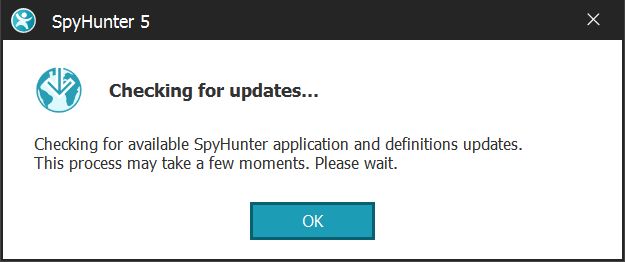
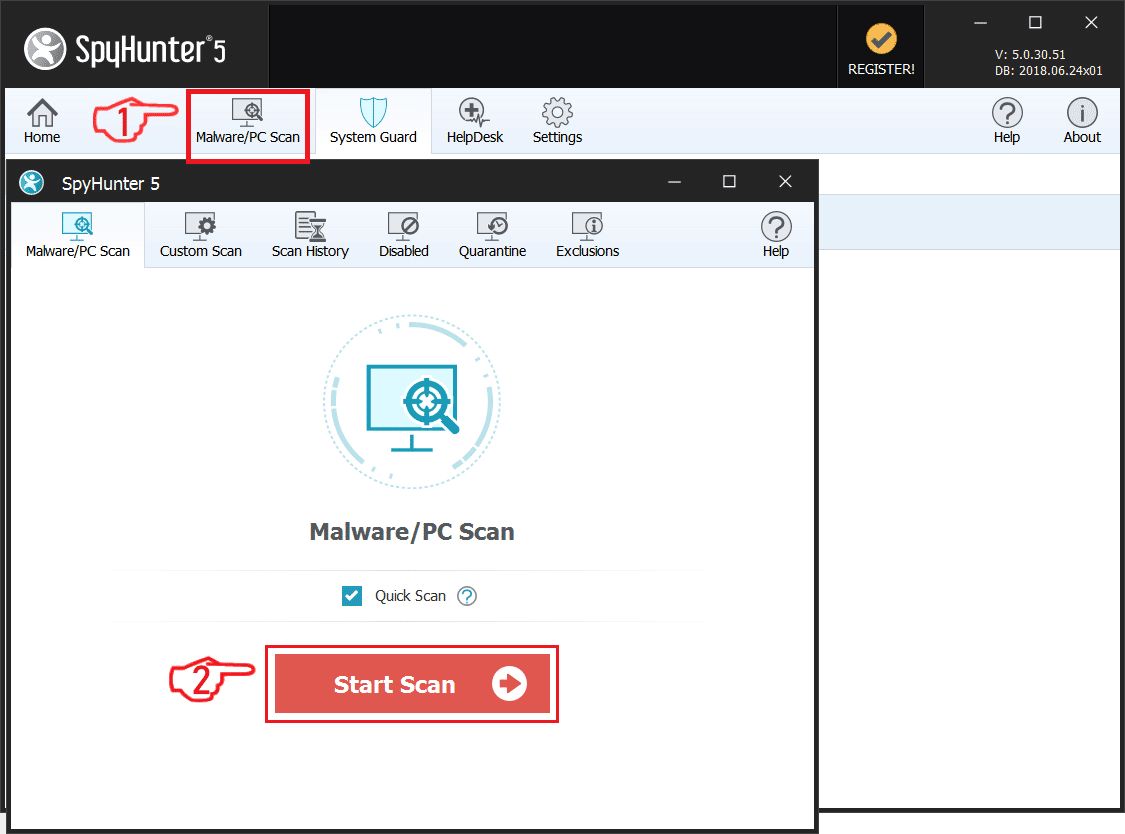
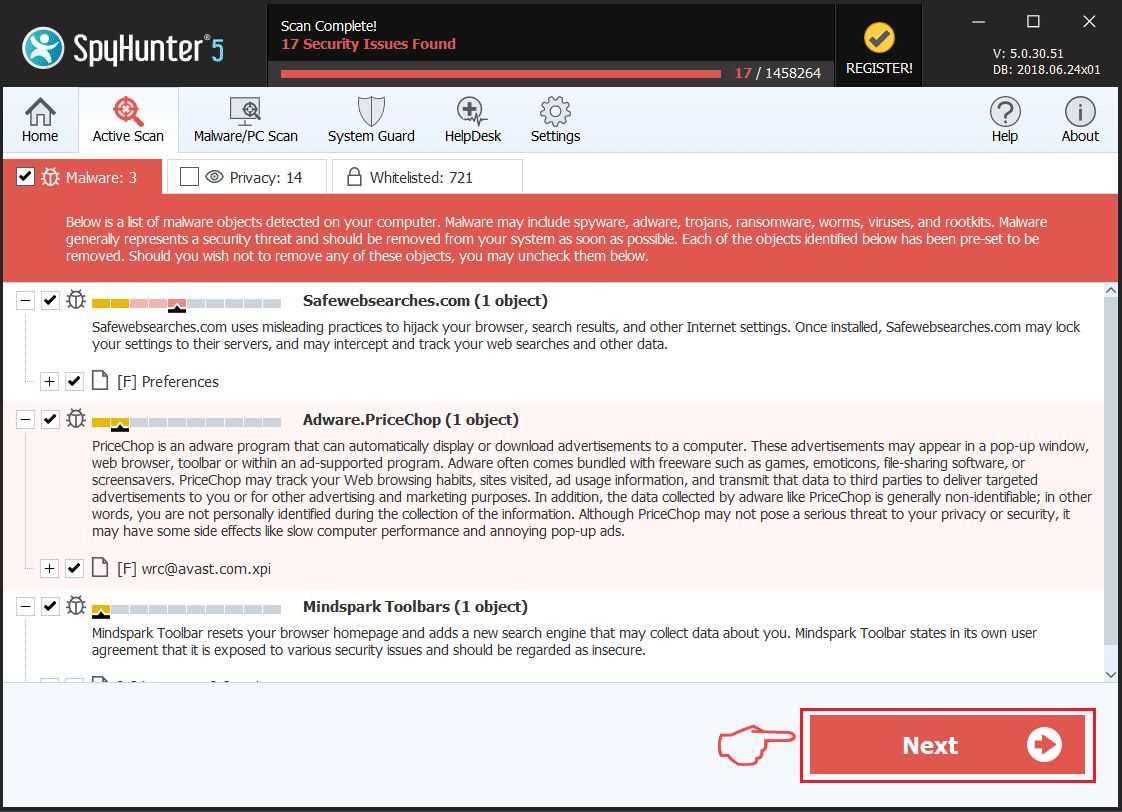
Step 2: Boot Your PC In Safe Mode

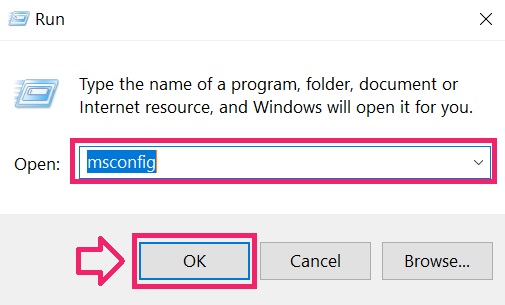
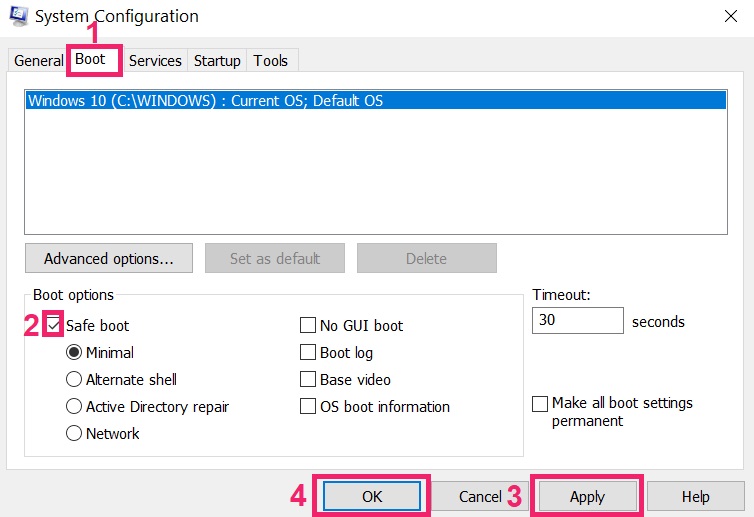
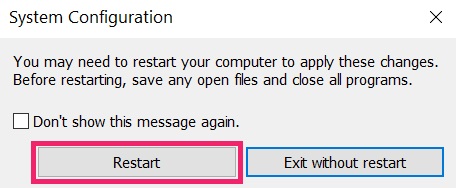
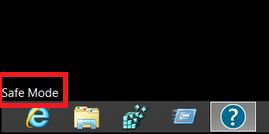
Step 3: Uninstall "Instagram Password Hacker" Scam and related software from Windows
Uninstall Steps for Windows 11
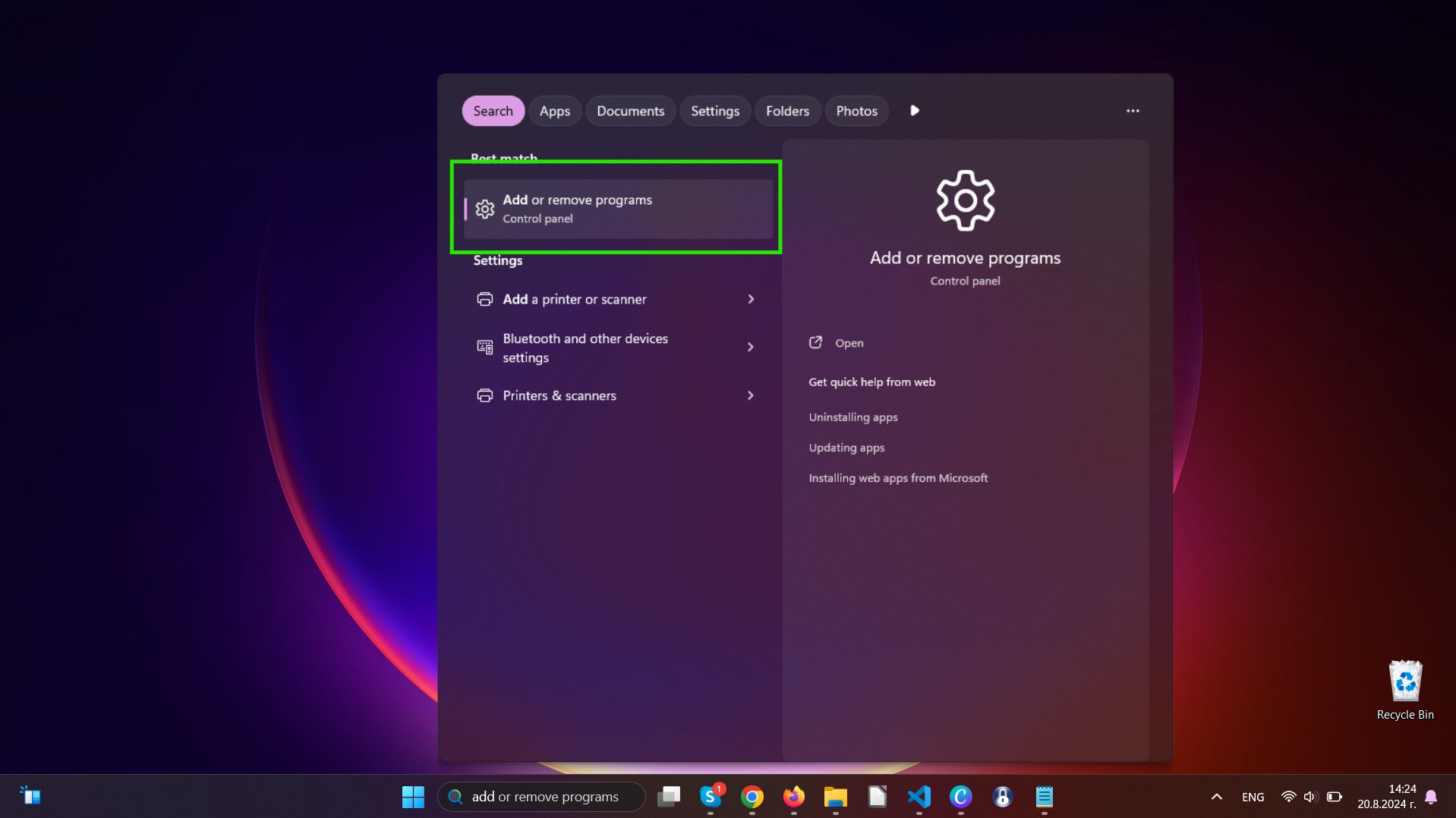
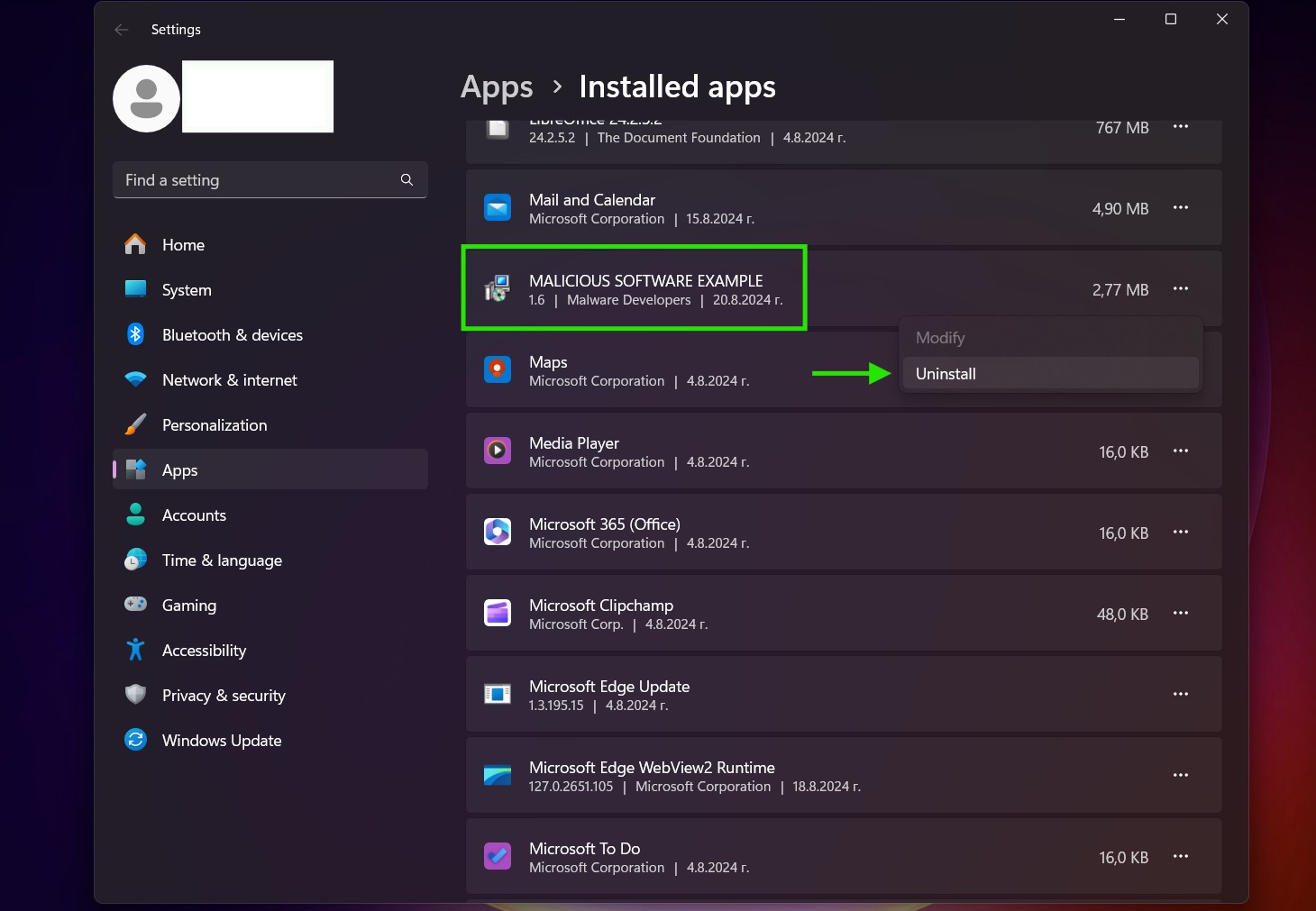
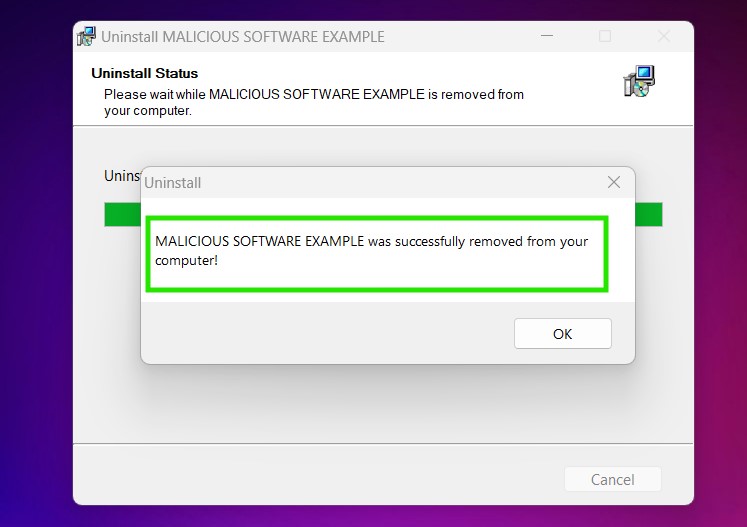
Uninstall Steps for Windows 10 and Older Versions
Here is a method in few easy steps that should be able to uninstall most programs. No matter if you are using Windows 10, 8, 7, Vista or XP, those steps will get the job done. Dragging the program or its folder to the recycle bin can be a very bad decision. If you do that, bits and pieces of the program are left behind, and that can lead to unstable work of your PC, errors with the file type associations and other unpleasant activities. The proper way to get a program off your computer is to Uninstall it. To do that:

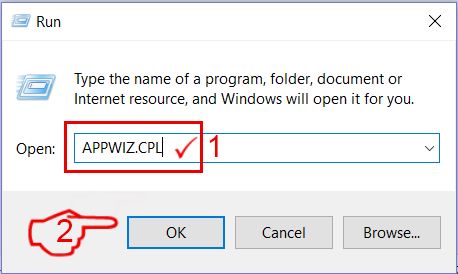
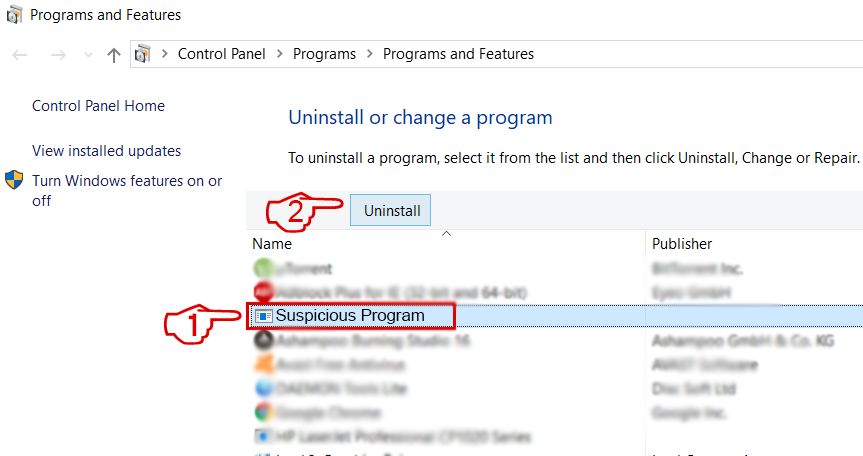 Follow the instructions above and you will successfully uninstall most programs.
Follow the instructions above and you will successfully uninstall most programs.
Step 4: Clean Any registries, Created by "Instagram Password Hacker" Scam on Your PC.
The usually targeted registries of Windows machines are the following:
- HKEY_LOCAL_MACHINE\Software\Microsoft\Windows\CurrentVersion\Run
- HKEY_CURRENT_USER\Software\Microsoft\Windows\CurrentVersion\Run
- HKEY_LOCAL_MACHINE\Software\Microsoft\Windows\CurrentVersion\RunOnce
- HKEY_CURRENT_USER\Software\Microsoft\Windows\CurrentVersion\RunOnce
You can access them by opening the Windows registry editor and deleting any values, created by "Instagram Password Hacker" Scam there. This can happen by following the steps underneath:
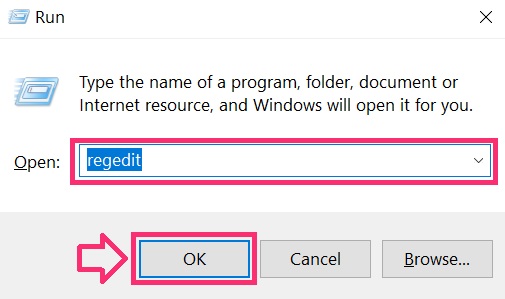

 Tip: To find a virus-created value, you can right-click on it and click "Modify" to see which file it is set to run. If this is the virus file location, remove the value.
Tip: To find a virus-created value, you can right-click on it and click "Modify" to see which file it is set to run. If this is the virus file location, remove the value.
Video Removal Guide for "Instagram Password Hacker" Scam (Windows).
Get rid of "Instagram Password Hacker" Scam from Mac OS X.
Step 1: Uninstall "Instagram Password Hacker" Scam and remove related files and objects
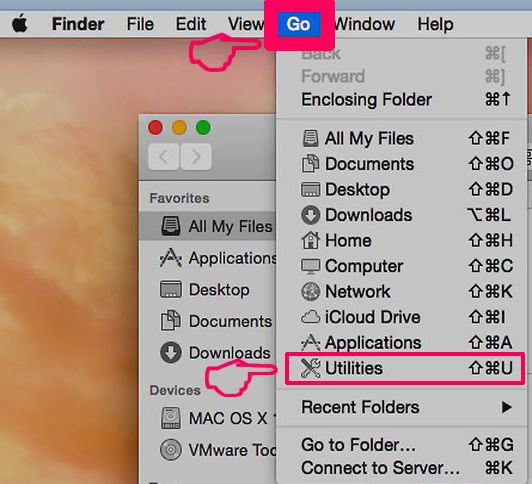
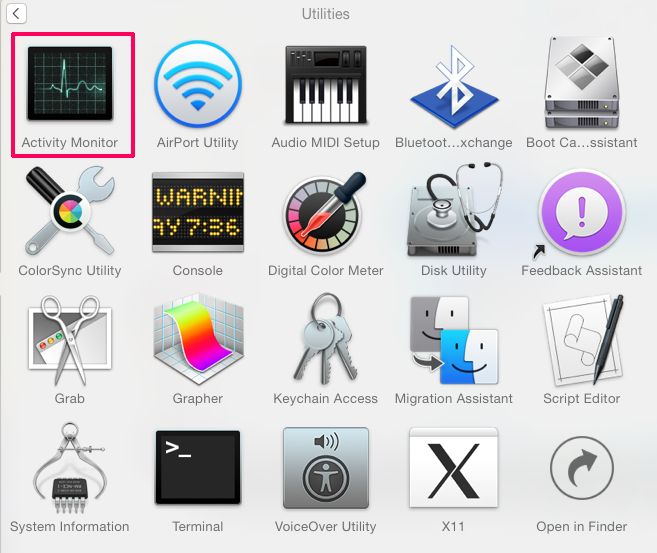
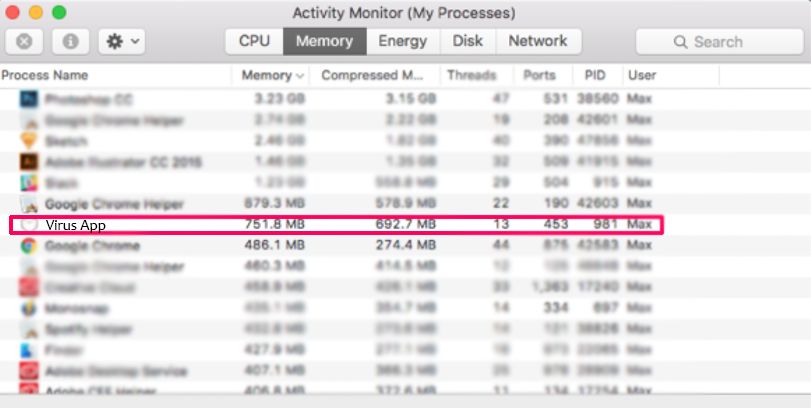
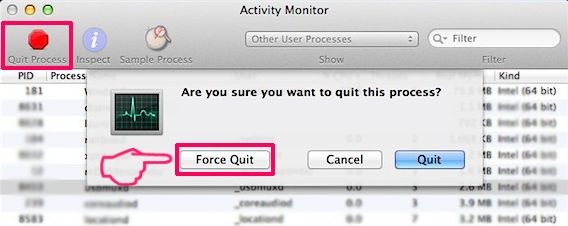
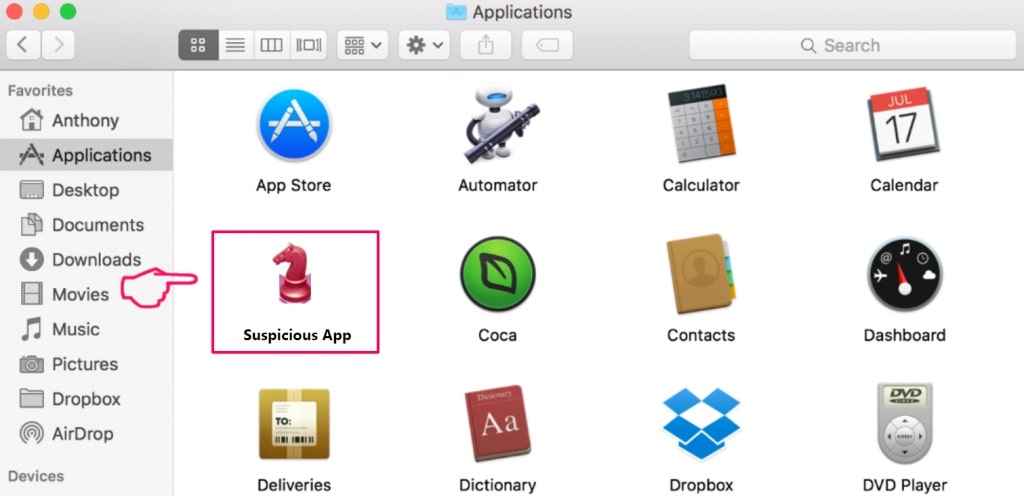
Your Mac will then show you a list of items that start automatically when you log in. Look for any suspicious apps identical or similar to "Instagram Password Hacker" Scam. Check the app you want to stop from running automatically and then select on the Minus (“-“) icon to hide it.
- Go to Finder.
- In the search bar type the name of the app that you want to remove.
- Above the search bar change the two drop down menus to “System Files” and “Are Included” so that you can see all of the files associated with the application you want to remove. Bear in mind that some of the files may not be related to the app so be very careful which files you delete.
- If all of the files are related, hold the ⌘+A buttons to select them and then drive them to “Trash”.
In case you cannot remove "Instagram Password Hacker" Scam via Step 1 above:
In case you cannot find the virus files and objects in your Applications or other places we have shown above, you can manually look for them in the Libraries of your Mac. But before doing this, please read the disclaimer below:
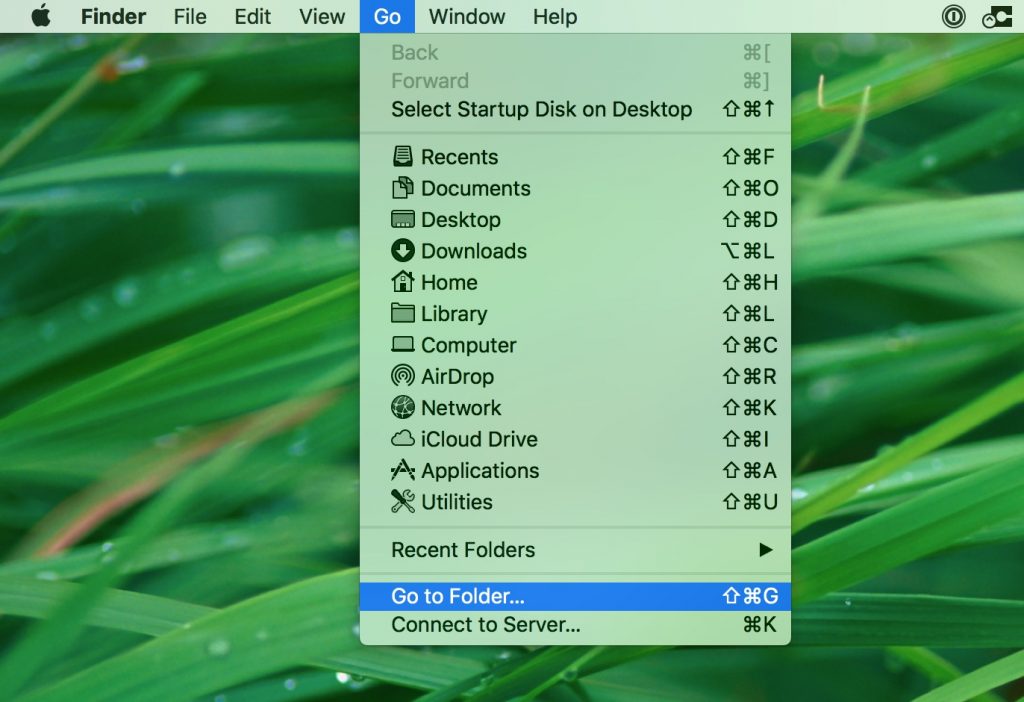
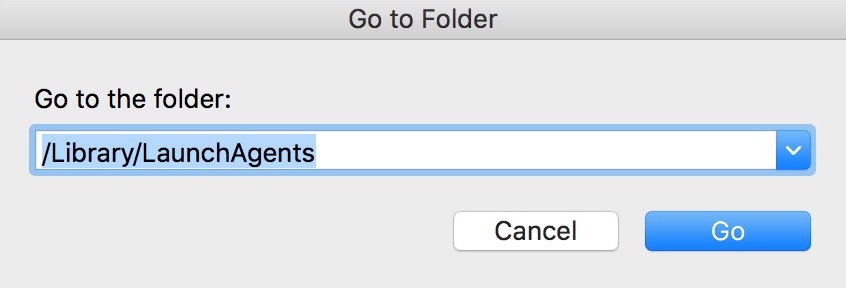
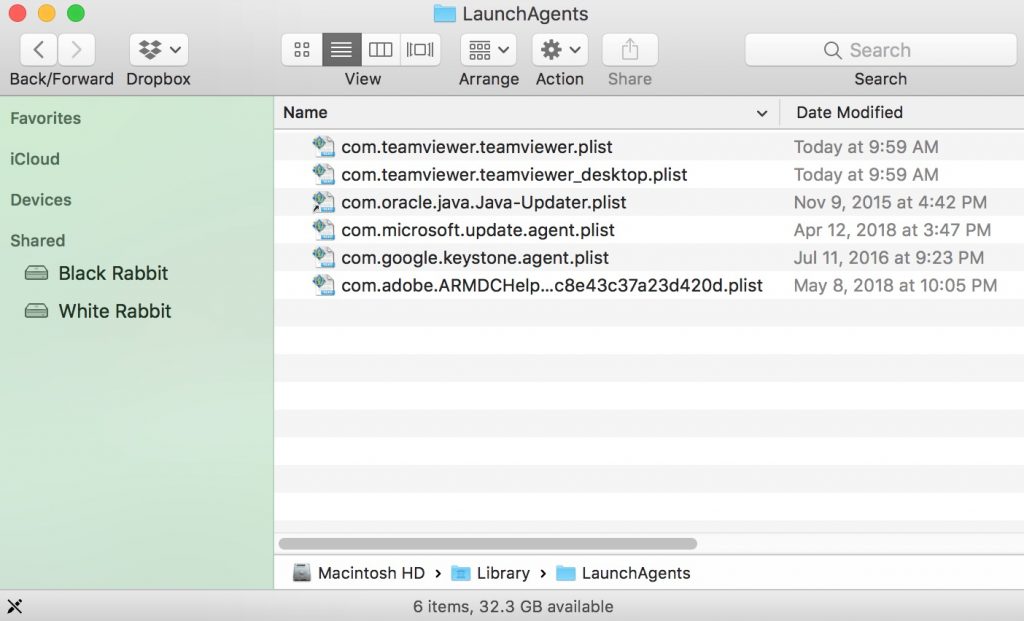
You can repeat the same procedure with the following other Library directories:
→ ~/Library/LaunchAgents
/Library/LaunchDaemons
Tip: ~ is there on purpose, because it leads to more LaunchAgents.
Step 2: Scan for and remove "Instagram Password Hacker" Scam files from your Mac
When you are facing problems on your Mac as a result of unwanted scripts and programs such as "Instagram Password Hacker" Scam, the recommended way of eliminating the threat is by using an anti-malware program. SpyHunter for Mac offers advanced security features along with other modules that will improve your Mac’s security and protect it in the future.
Video Removal Guide for "Instagram Password Hacker" Scam (Mac)
Remove "Instagram Password Hacker" Scam from Google Chrome.
Step 1: Start Google Chrome and open the drop menu
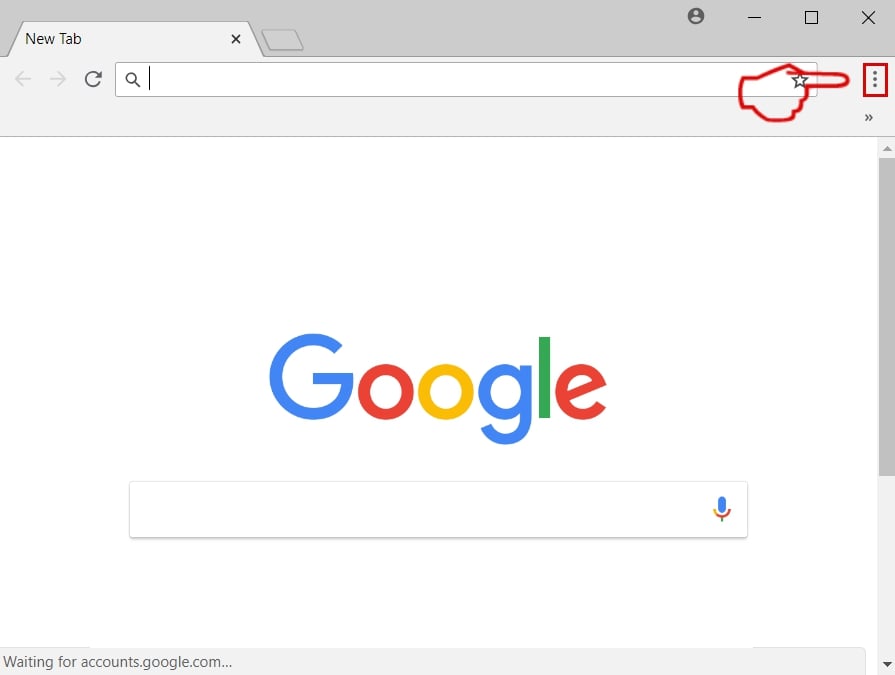
Step 2: Move the cursor over "Tools" and then from the extended menu choose "Extensions"
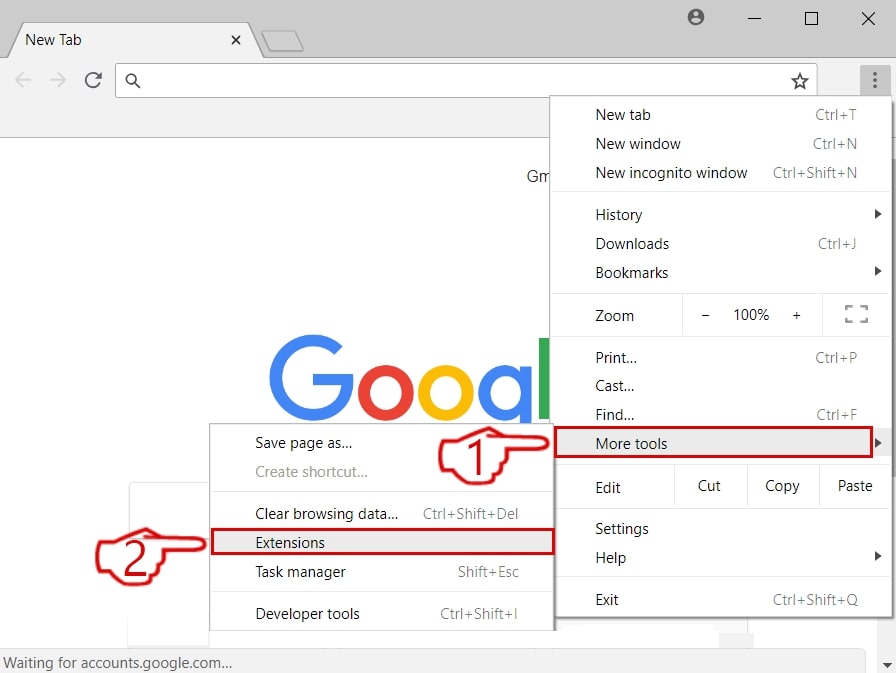
Step 3: From the opened "Extensions" menu locate the unwanted extension and click on its "Remove" button.
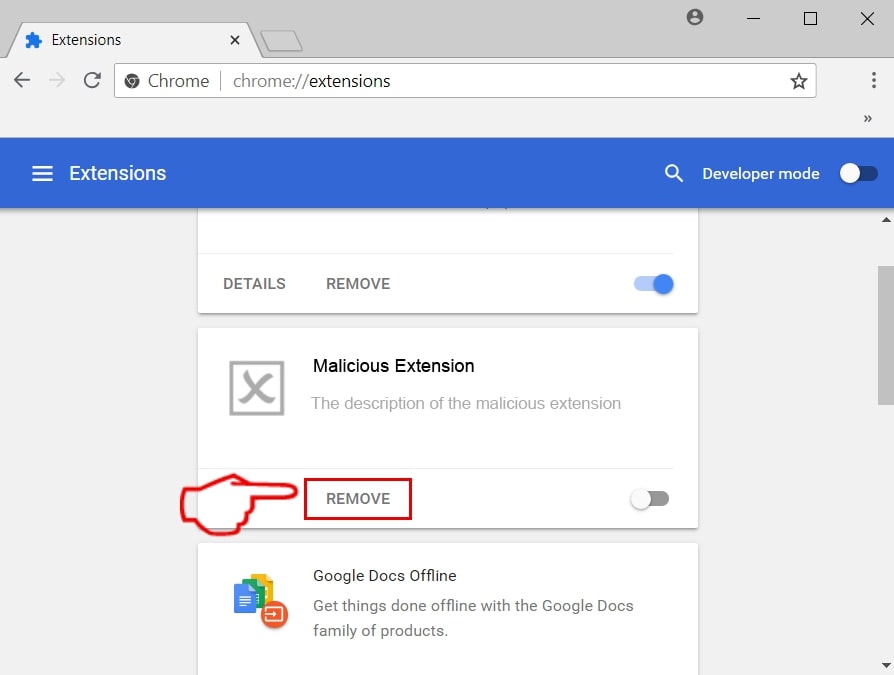
Step 4: After the extension is removed, restart Google Chrome by closing it from the red "X" button at the top right corner and start it again.
Erase "Instagram Password Hacker" Scam from Mozilla Firefox.
Step 1: Start Mozilla Firefox. Open the menu window:
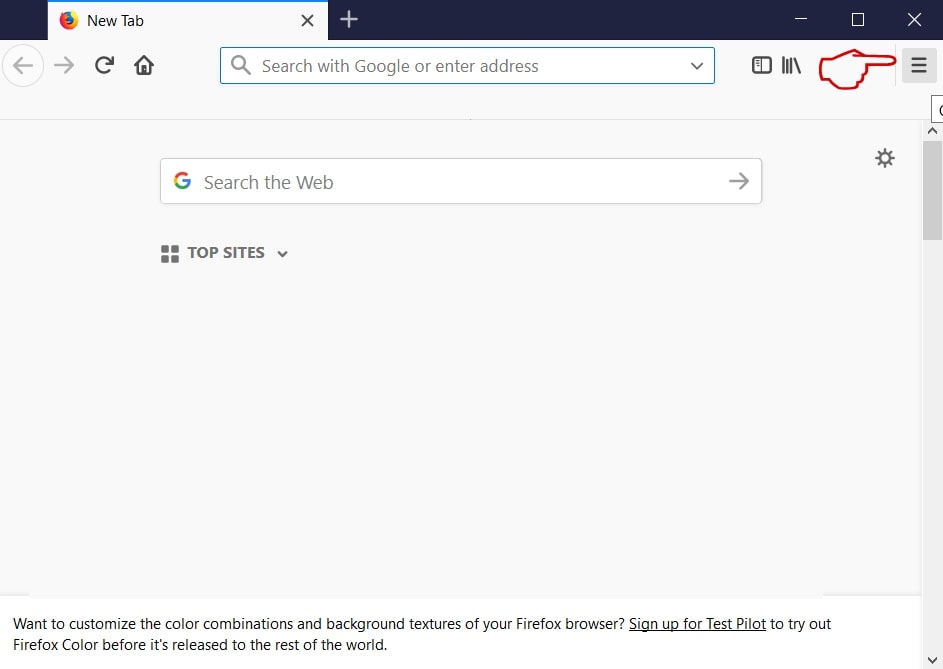
Step 2: Select the "Add-ons" icon from the menu.
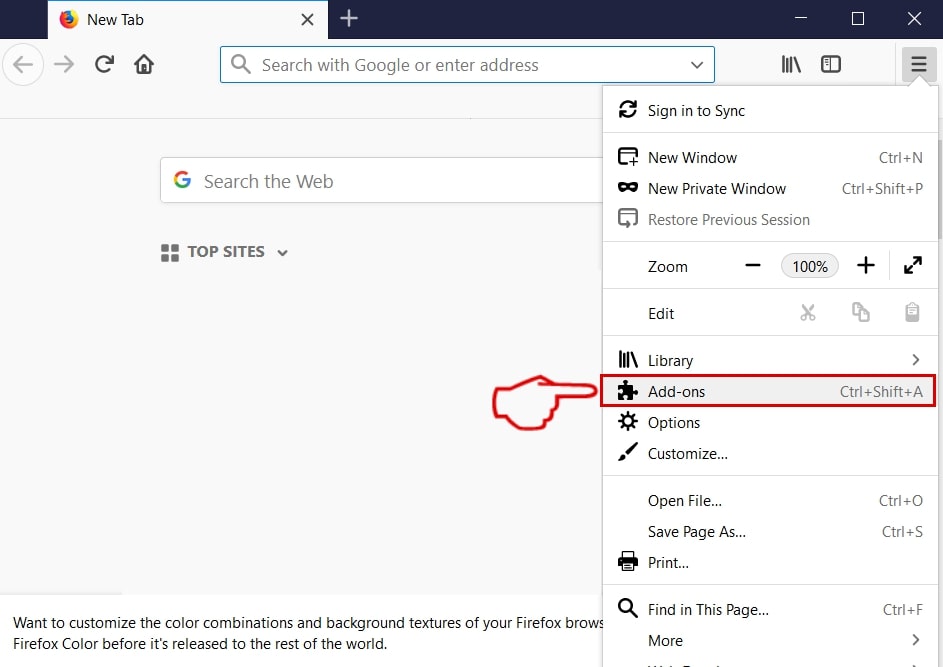
Step 3: Select the unwanted extension and click "Remove"

Step 4: After the extension is removed, restart Mozilla Firefox by closing it from the red "X" button at the top right corner and start it again.
Uninstall "Instagram Password Hacker" Scam from Microsoft Edge.
Step 1: Start Edge browser.
Step 2: Open the drop menu by clicking on the icon at the top right corner.
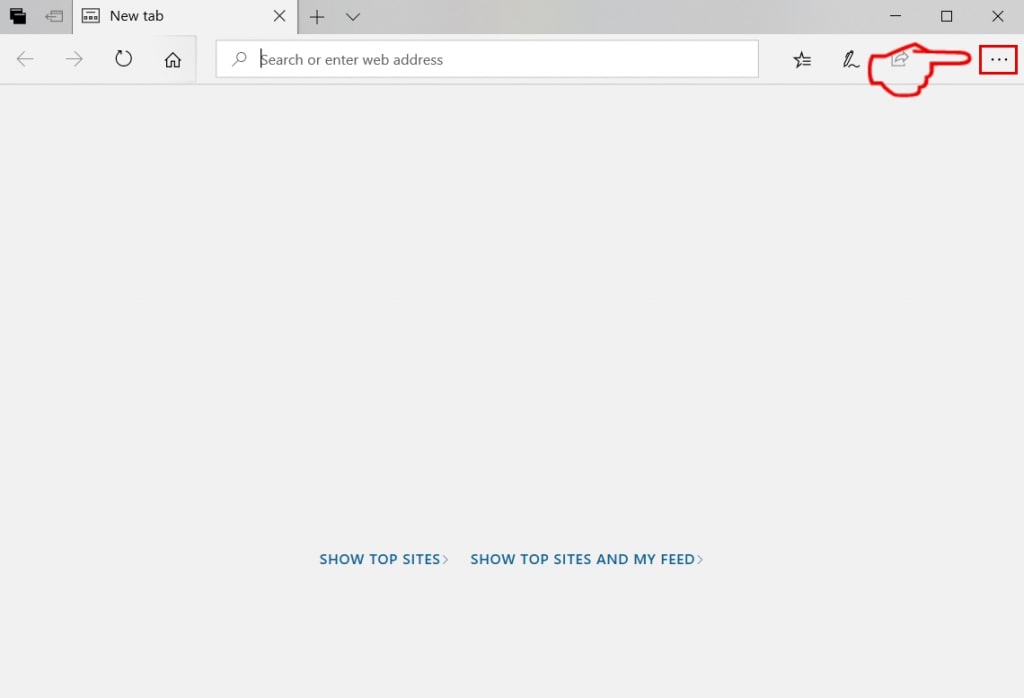
Step 3: From the drop menu select "Extensions".
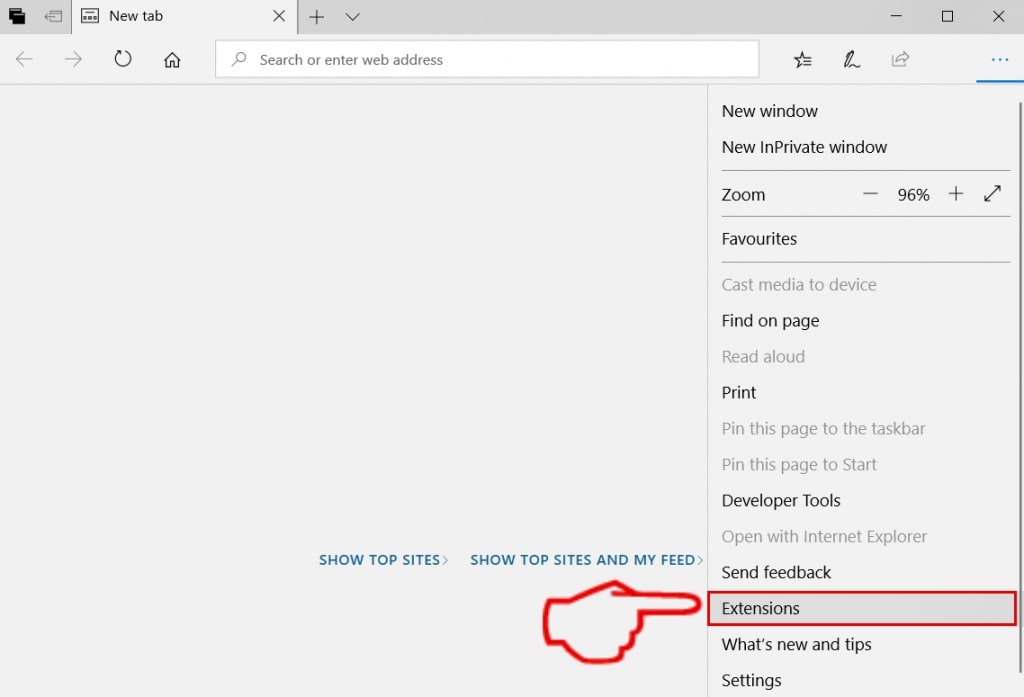
Step 4: Choose the suspected malicious extension you want to remove and then click on the gear icon.
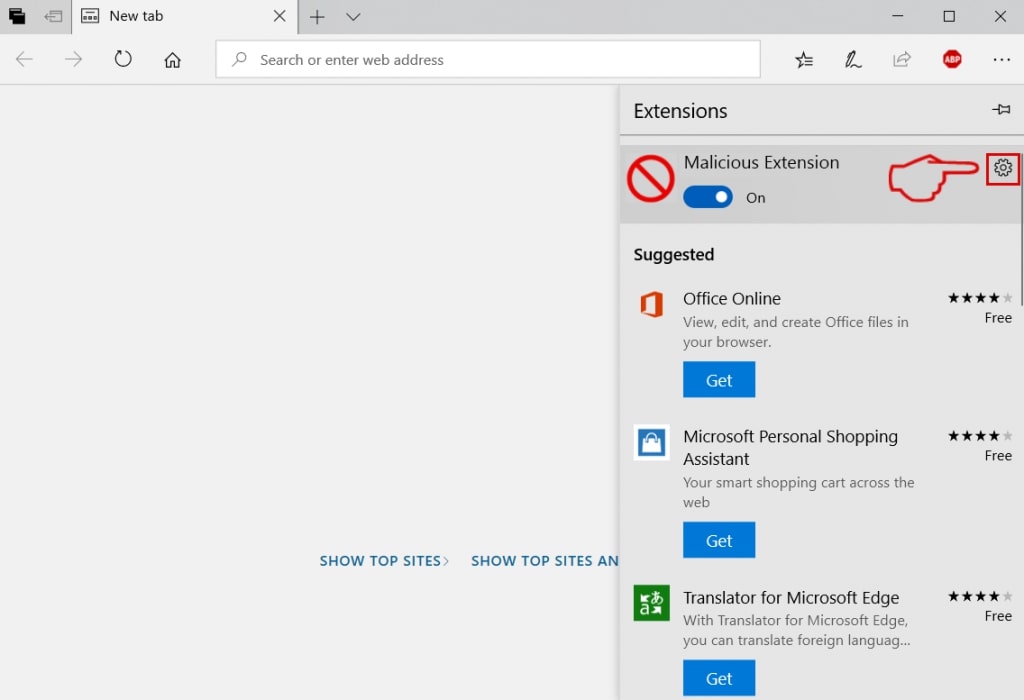
Step 5: Remove the malicious extension by scrolling down and then clicking on Uninstall.
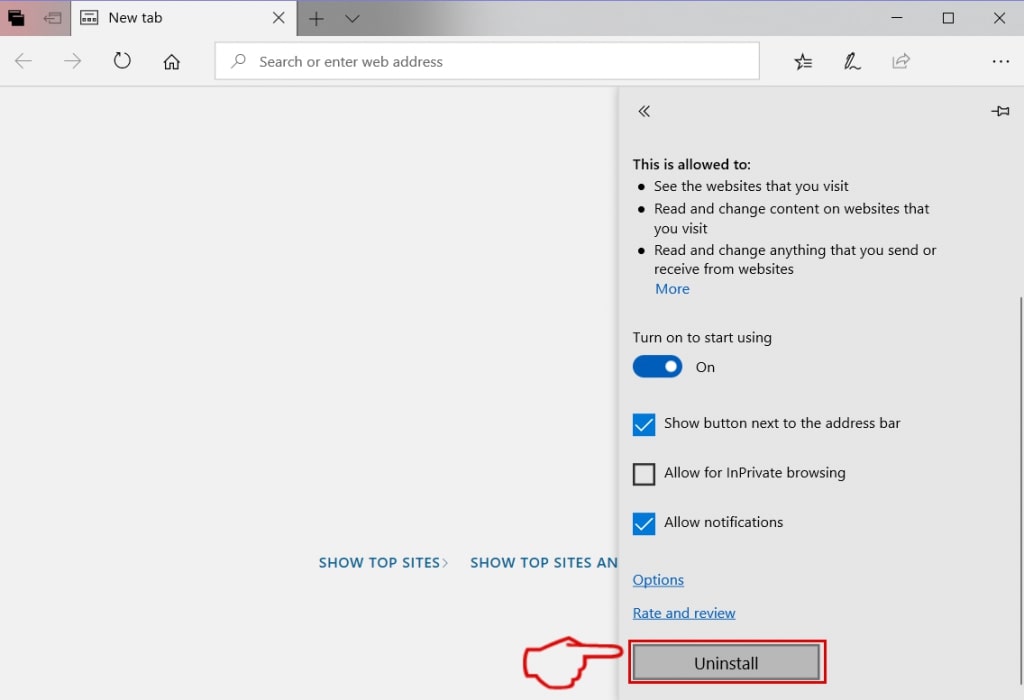
Remove "Instagram Password Hacker" Scam from Safari
Step 1: Start the Safari app.
Step 2: After hovering your mouse cursor to the top of the screen, click on the Safari text to open its drop down menu.
Step 3: From the menu, click on "Preferences".
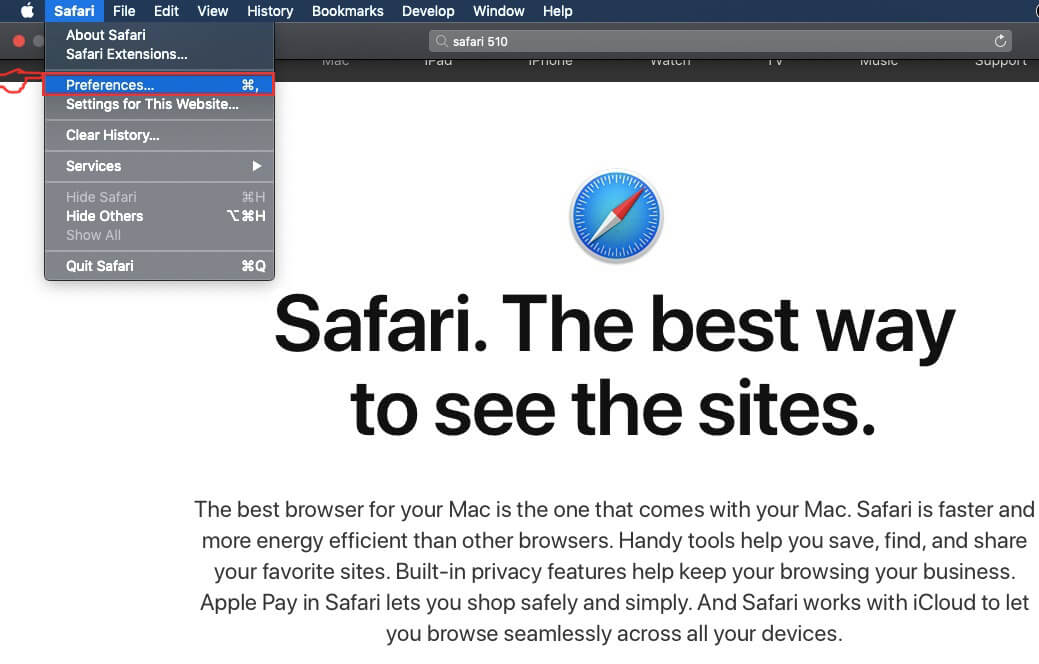
Step 4: After that, select the 'Extensions' Tab.

Step 5: Click once on the extension you want to remove.
Step 6: Click 'Uninstall'.
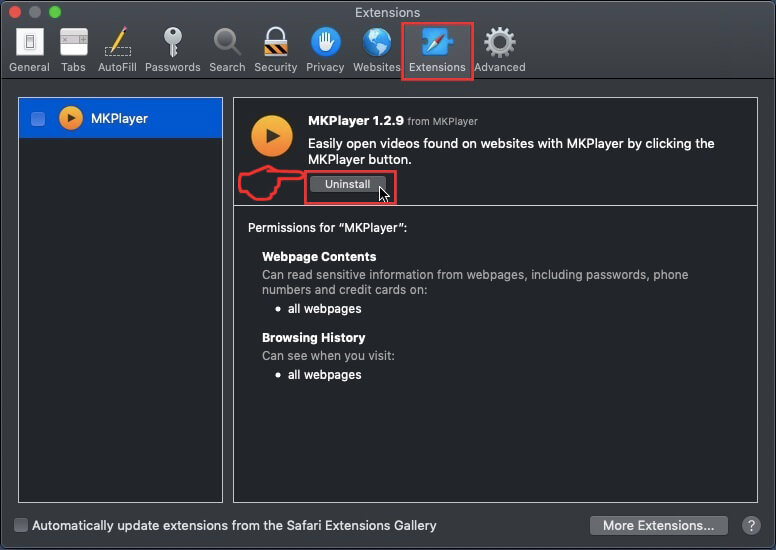
A pop-up window will appear asking for confirmation to uninstall the extension. Select 'Uninstall' again, and the "Instagram Password Hacker" Scam will be removed.
Eliminate "Instagram Password Hacker" Scam from Internet Explorer.
Step 1: Start Internet Explorer.
Step 2: Click on the gear icon labeled 'Tools' to open the drop menu and select 'Manage Add-ons'
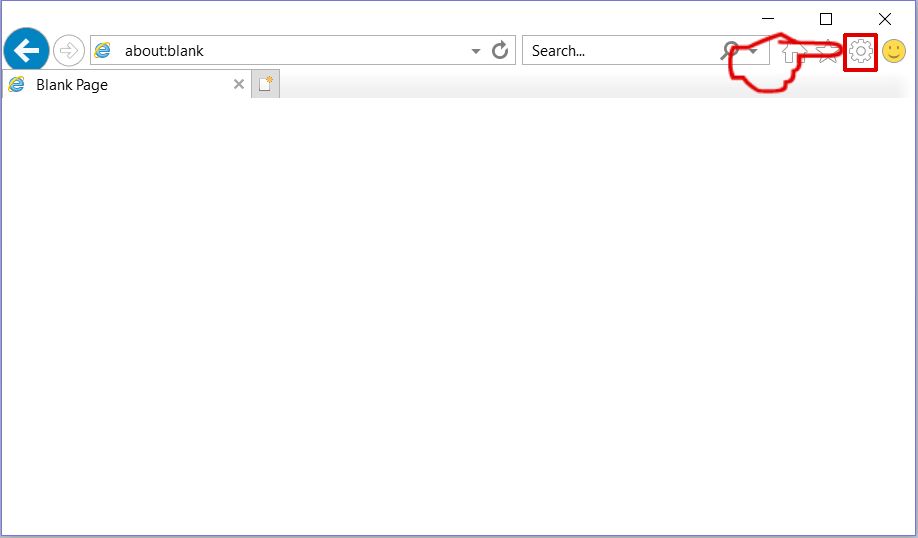
Step 3: In the 'Manage Add-ons' window.
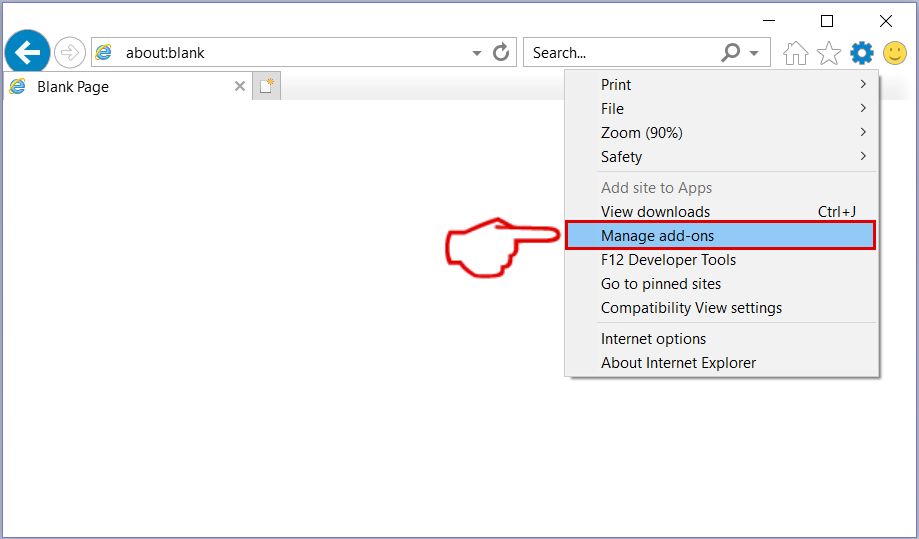
Step 4: Select the extension you want to remove and then click 'Disable'. A pop-up window will appear to inform you that you are about to disable the selected extension, and some more add-ons might be disabled as well. Leave all the boxes checked, and click 'Disable'.
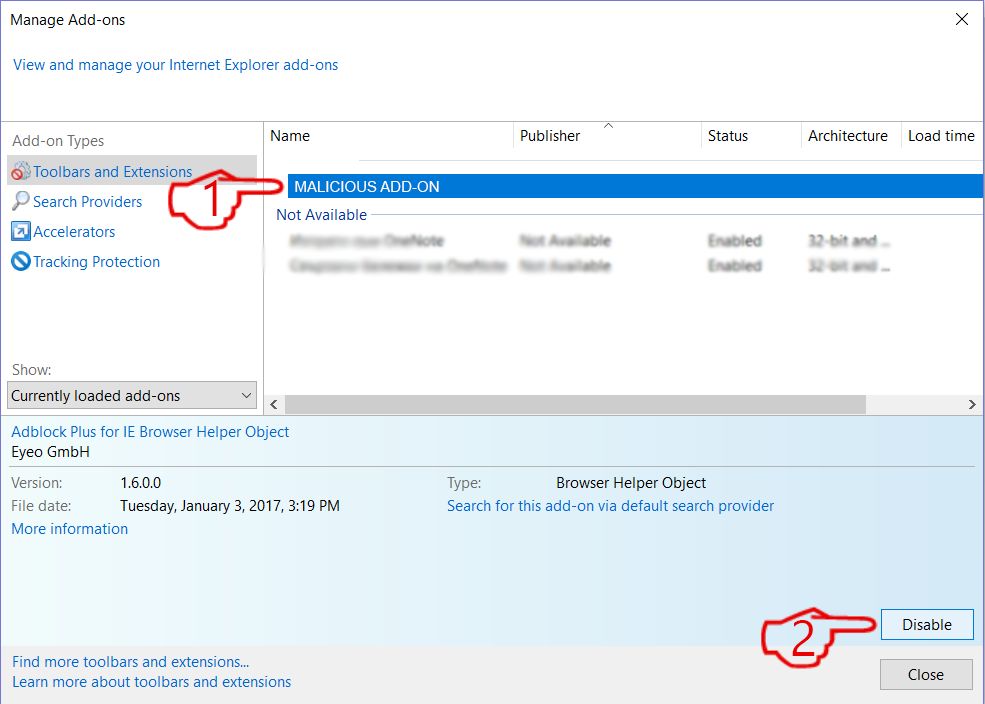
Step 5: After the unwanted extension has been removed, restart Internet Explorer by closing it from the red 'X' button located at the top right corner and start it again.
Remove Push Notifications from Your Browsers
Turn Off Push Notifications from Google Chrome
To disable any Push Notices from Google Chrome browser, please follow the steps below:
Step 1: Go to Settings in Chrome.
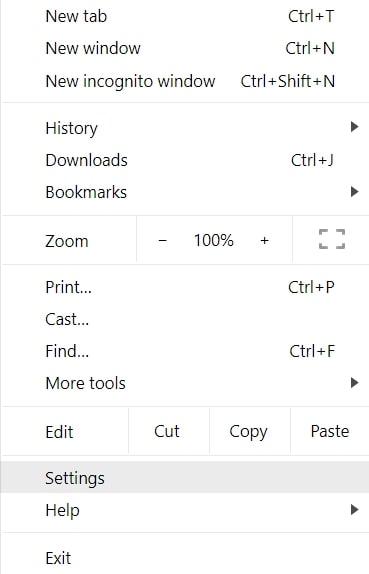
Step 2: In Settings, select “Advanced Settings”:
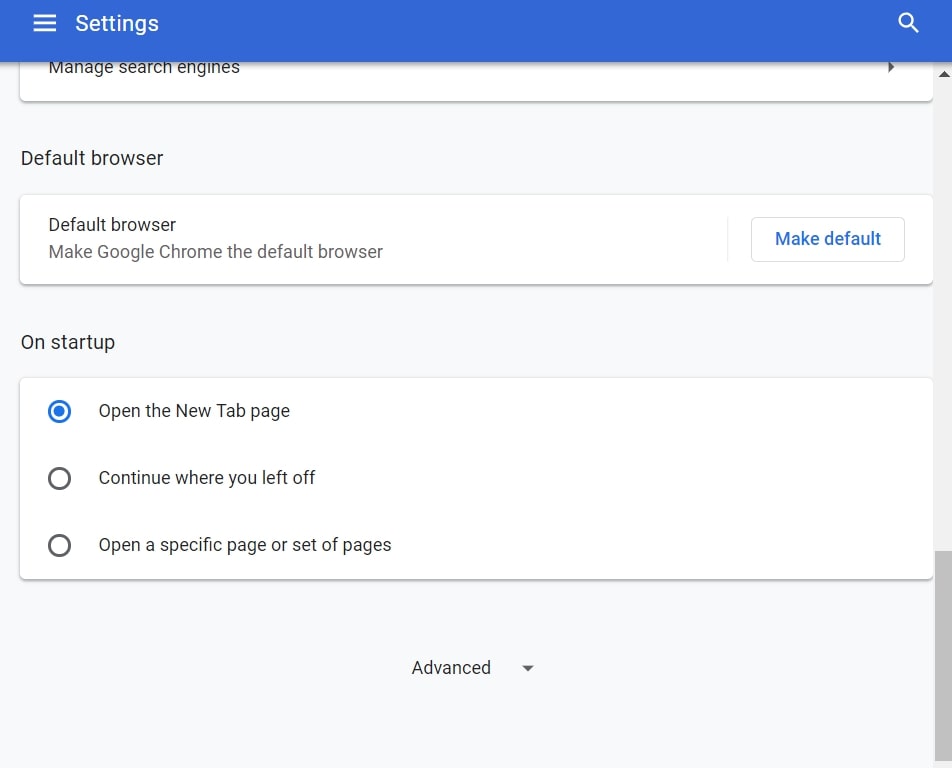
Step 3: Click “Content Settings”:
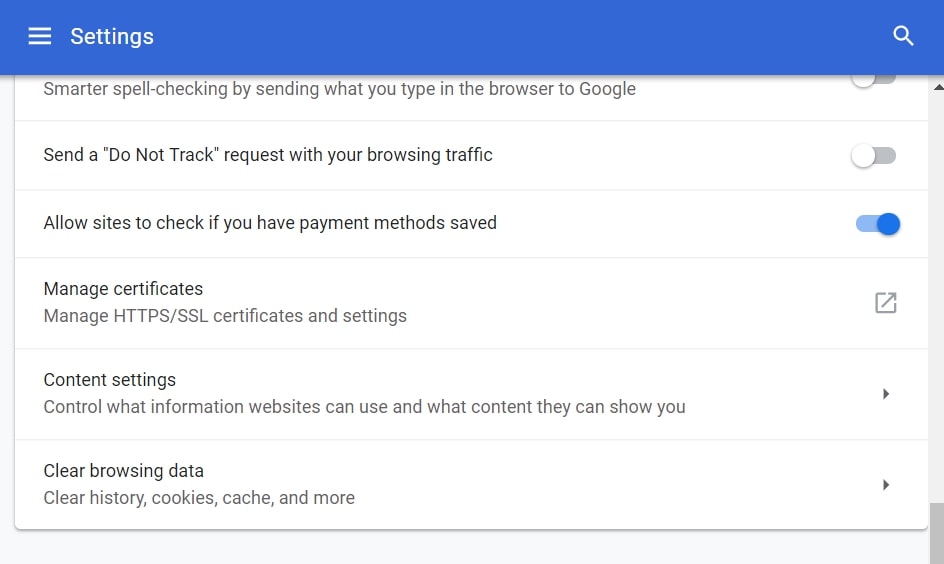
Step 4: Open “Notifications”:
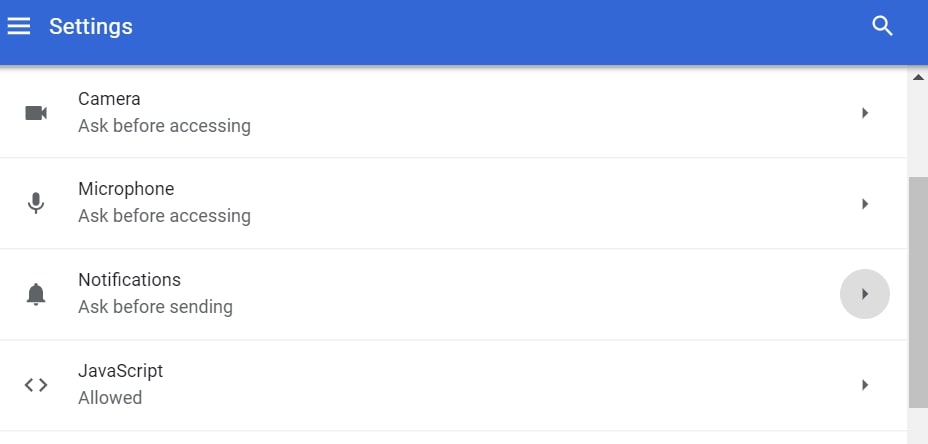
Step 5: Click the three dots and choose Block, Edit or Remove options:

Remove Push Notifications on Firefox
Step 1: Go to Firefox Options.
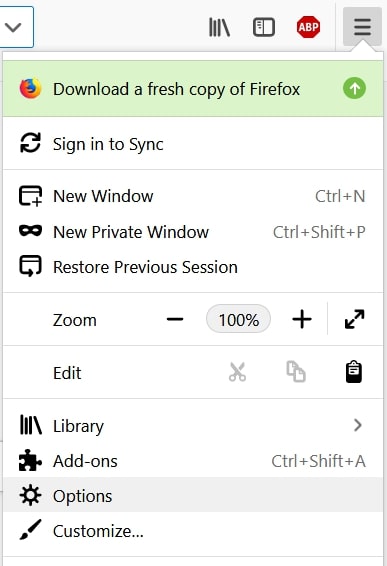
Step 2: Go to “Settings”, type “notifications” in the search bar and click "Settings":
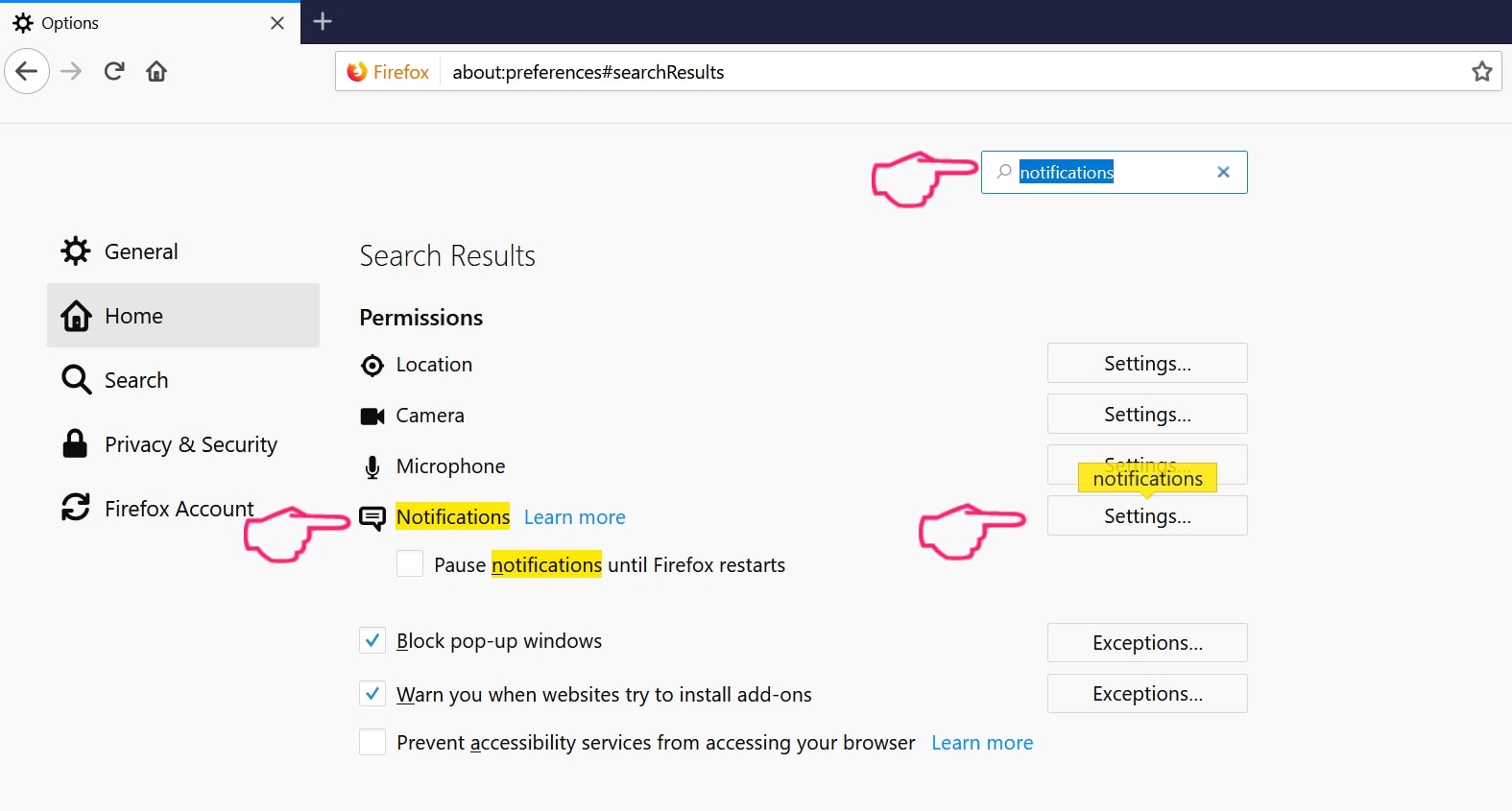
Step 3: Click “Remove” on any site you wish notifications gone and click “Save Changes”
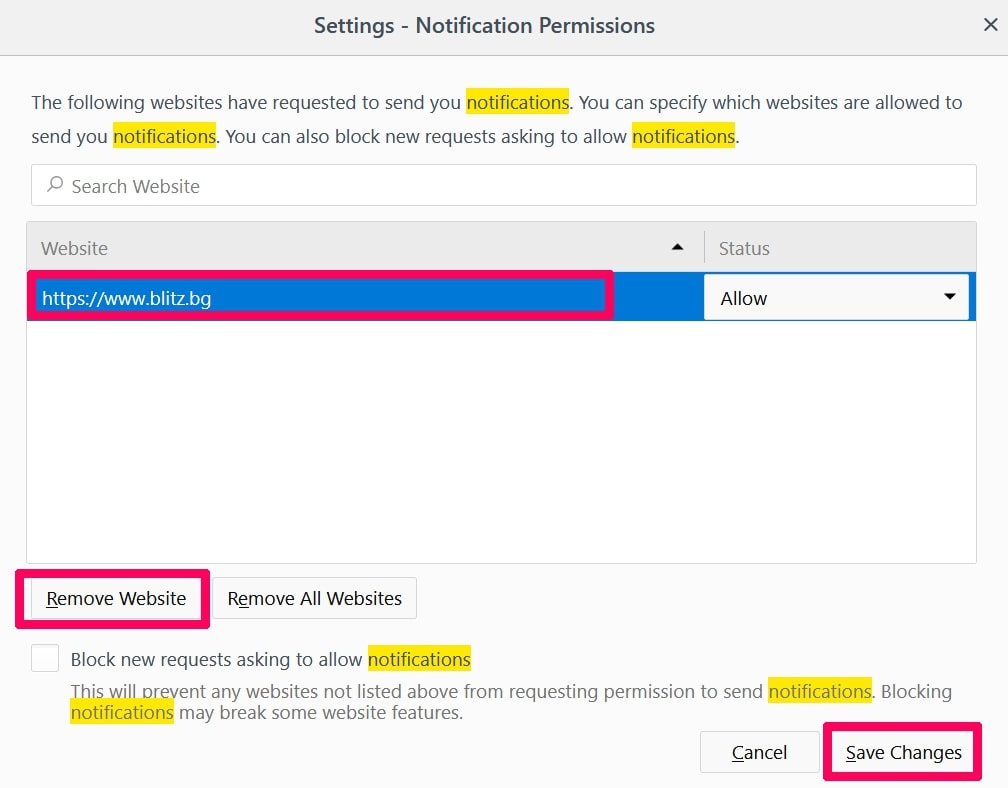
Stop Push Notifications on Opera
Step 1: In Opera, press ALT+P to go to Settings.

Step 2: In Setting search, type “Content” to go to Content Settings.
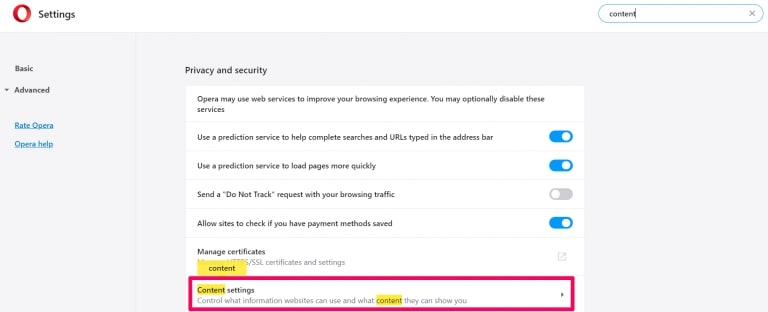
Step 3: Open Notifications:
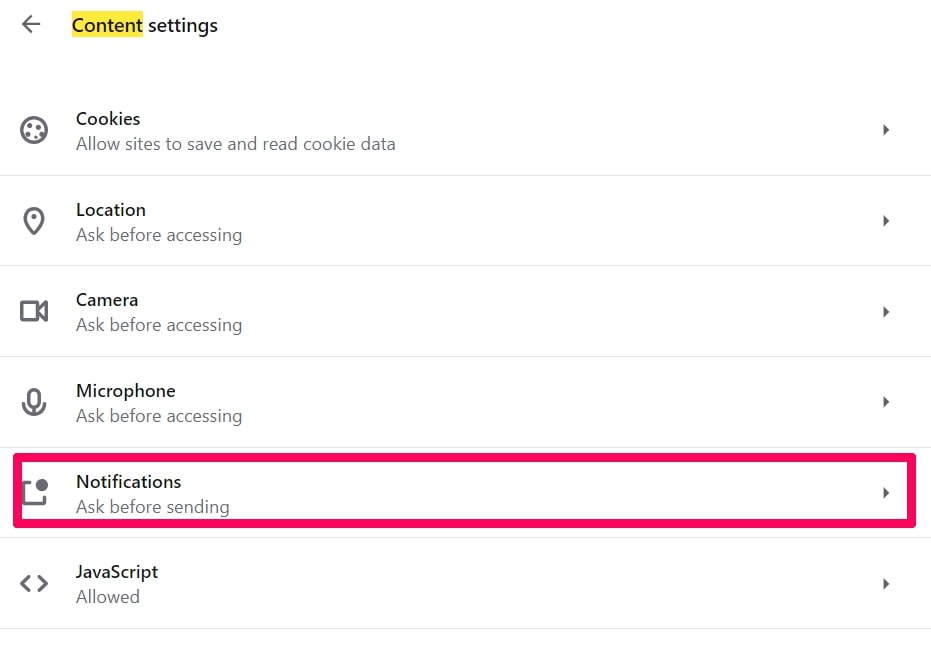
Step 4: Do the same as you did with Google Chrome (explained below):
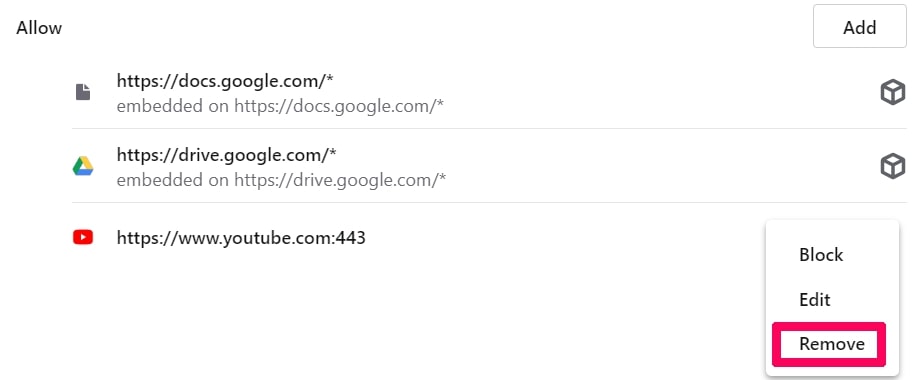
Eliminate Push Notifications on Safari
Step 1: Open Safari Preferences.
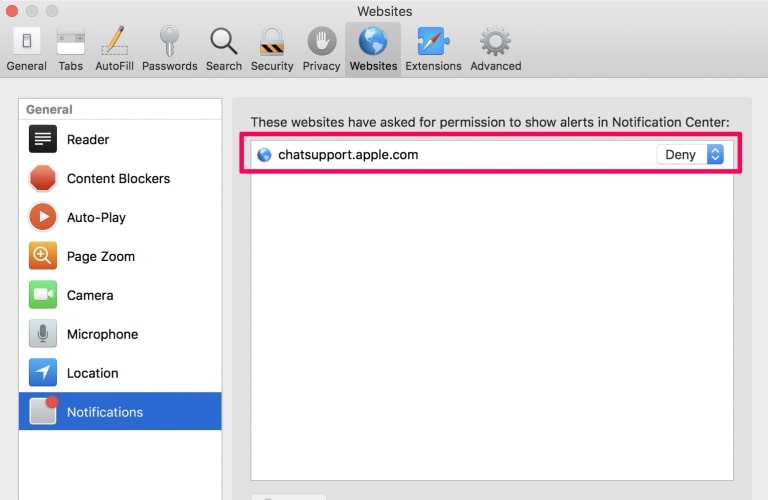
Step 2: Choose the domain from where you like push pop-ups gone and change to "Deny" from "Allow".
"Instagram Password Hacker" Scam-FAQ
What Is "Instagram Password Hacker" Scam?
The "Instagram Password Hacker" Scam threat is adware or browser redirect virus.
It may slow your computer down significantly and display advertisements. The main idea is for your information to likely get stolen or more ads to appear on your device.
The creators of such unwanted apps work with pay-per-click schemes to get your computer to visit risky or different types of websites that may generate them funds. This is why they do not even care what types of websites show up on the ads. This makes their unwanted software indirectly risky for your OS.
What Are the Symptoms of "Instagram Password Hacker" Scam?
There are several symptoms to look for when this particular threat and also unwanted apps in general are active:
Symptom #1: Your computer may become slow and have poor performance in general.
Symptom #2: You have toolbars, add-ons or extensions on your web browsers that you don't remember adding.
Symptom #3: You see all types of ads, like ad-supported search results, pop-ups and redirects to randomly appear.
Symptom #4: You see installed apps on your Mac running automatically and you do not remember installing them.
Symptom #5: You see suspicious processes running in your Task Manager.
If you see one or more of those symptoms, then security experts recommend that you check your computer for viruses.
What Types of Unwanted Programs Are There?
According to most malware researchers and cyber-security experts, the threats that can currently affect your device can be rogue antivirus software, adware, browser hijackers, clickers, fake optimizers and any forms of PUPs.
What to Do If I Have a "virus" like "Instagram Password Hacker" Scam?
With few simple actions. First and foremost, it is imperative that you follow these steps:
Step 1: Find a safe computer and connect it to another network, not the one that your Mac was infected in.
Step 2: Change all of your passwords, starting from your email passwords.
Step 3: Enable two-factor authentication for protection of your important accounts.
Step 4: Call your bank to change your credit card details (secret code, etc.) if you have saved your credit card for online shopping or have done online activities with your card.
Step 5: Make sure to call your ISP (Internet provider or carrier) and ask them to change your IP address.
Step 6: Change your Wi-Fi password.
Step 7: (Optional): Make sure to scan all of the devices connected to your network for viruses and repeat these steps for them if they are affected.
Step 8: Install anti-malware software with real-time protection on every device you have.
Step 9: Try not to download software from sites you know nothing about and stay away from low-reputation websites in general.
If you follow these recommendations, your network and all devices will become significantly more secure against any threats or information invasive software and be virus free and protected in the future too.
How Does "Instagram Password Hacker" Scam Work?
Once installed, "Instagram Password Hacker" Scam can collect data using trackers. This data is about your web browsing habits, such as the websites you visit and the search terms you use. It is then used to target you with ads or to sell your information to third parties.
"Instagram Password Hacker" Scam can also download other malicious software onto your computer, such as viruses and spyware, which can be used to steal your personal information and show risky ads, that may redirect to virus sites or scams.
Is "Instagram Password Hacker" Scam Malware?
The truth is that PUPs (adware, browser hijackers) are not viruses, but may be just as dangerous since they may show you and redirect you to malware websites and scam pages.
Many security experts classify potentially unwanted programs as malware. This is because of the unwanted effects that PUPs can cause, such as displaying intrusive ads and collecting user data without the user’s knowledge or consent.
About the "Instagram Password Hacker" Scam Research
The content we publish on SensorsTechForum.com, this "Instagram Password Hacker" Scam how-to removal guide included, is the outcome of extensive research, hard work and our team’s devotion to help you remove the specific, adware-related problem, and restore your browser and computer system.
How did we conduct the research on "Instagram Password Hacker" Scam?
Please note that our research is based on independent investigation. We are in contact with independent security researchers, thanks to which we receive daily updates on the latest malware, adware, and browser hijacker definitions.
Furthermore, the research behind the "Instagram Password Hacker" Scam threat is backed with VirusTotal.
To better understand this online threat, please refer to the following articles which provide knowledgeable details.


